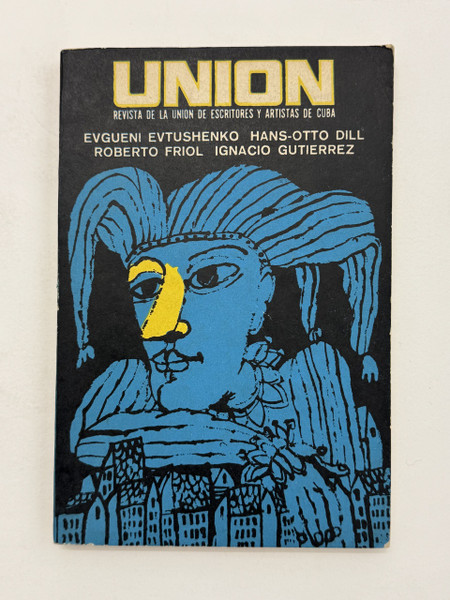- Travel
-
Exhibits
- La Portada Cubana
- Immortal Cuba: Artists Take on Their Heroes
- Seattle Poster Exhibit
- Sandra Dooley & Alejandrina Cué
- The Art of Wayacón
- Cuban Folk Art
- Cuba In Black And White
- 25 Years of Cuban Art Space
- Summer Folk Art Expo
- ¡SPRING AWAKENING FROM CUBA!
- Celebrating The Art Of Cuban Women
- Celebrating Paper, Affordable Art from Cuba
- Art of the Revolution
- Outsider Art
- Lost and Found
- En la lucha: Celebrating Cuban Women and Their Art
- Cuban Art Stash
- 100 Fires: 5 Cienfuegos Artists' Work on Paper
- Waya + Monte! Magic Realism in Cienfuegos
- Viva Cuba Viva! Poster Show
- Cultivando Sueños
- Black Lives Matter in Cuba Jan 9-March 27
- Leandro Soto: Crónicas visuales
- Cuban Canvas
-
Archive
- Global Reflection 2018: Spirit and Community
- Exhibit in the cloud: Contemporary Works on Paper
- MADE IN CUBA! MINNEAPOLIS EXHIBIT
- Cuban Posters and Photography from CCS collection
- AUTUMN SALE! Sept/Oct 2017
- SPRING ARTS AND CRAFT SALE
- Vuelo Directo/Non Stop: Alberto & Alejandro Lescay
- The Many Faces of Fidel
- Somos
- Made in Cuba!
- The US empire in Cuban graphics
- Made in Cuba/Seattle exhibit
- Entre Nos
- Looking Back
- Cuban Art Space
- Membership/Donate
- About Us
- Cuba News
-
This issue of UNIÓN showcases the magazine's commitment to international socialist literary solidarity alongside Cuban voices during a critical period of Cold War tensions. The cover, designed by the celebrated Cuban poster artist Muñoz Bachs, features a powerful expressionist illustration rendered in vibrant turquoise and yellow against a deep black background. The stylized figure with flowing hair hovers above a simplified urban skyline, creating a dreamlike composition that merges human consciousness with the built environment in a distinctly modernist aesthetic.
Featured prominently is Soviet poet Evgueni Evtushenko, whose work "Donde crecen las bayas" (Where the Berries Grow) appears in this issue. Evtushenko was one of the most internationally recognized Soviet poets, known for challenging Stalinist orthodoxy while remaining within the socialist framework. East German critic and essayist Hans-Otto Dill contributes an important essay on "Los Cantos para soldados" (Songs for Soldiers), analyzing Nicolás Guillén's militant revolutionary poetry as an exemplar of socially engaged literature.
Cuban contributors include Roberto Friol with "Dos retratos del poeta Escardó," dramatist and theater director Ignacio Gutierrez with his work "Kunene," and essayist Angel Augier examining "Sangre de la poesía que gotea en tu pintura" (Blood of poetry dripping in your painting). The issue also features a poetry cycle by Carlos Galindo Lena, Sigifredo Alvarez Conesa, Francisco de Asís Fernández, and Gaspar Jorge García Galló, whose essay explores how the Cuban Revolution confirms the scientific Marxist character of socialism.
Significantly, this issue includes documentary sections with declarations from the National Council of UNEAC and a communication regarding the events in Granada, likely referencing the 1983 U.S. invasion of Grenada, demonstrating UNIÓN's role as a vehicle for political solidarity beyond purely literary concerns. Interior vignettes by Mario Galiardo complement the literary content, maintaining the integration of visual art and literature that characterized UNIÓN magazine throughout its history.
-
-
Discover More at the Center for Cuban Studies


